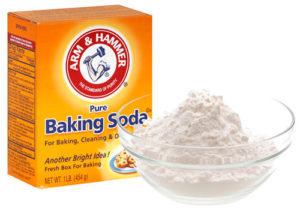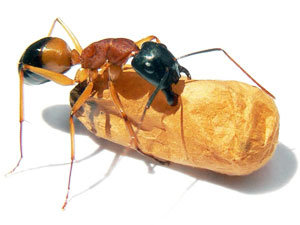Discovering ants in your vehicle can quickly escalate from a minor annoyance to a serious problem. These persistent insects are attracted to food crumbs, moisture, and warmth, making cars ideal temporary colonies. Professional ant control products combined with thorough cleaning and strategic prevention methods provide the most effective approach to eliminating automotive ant infestations while preventing future invasions.
Quick Picks: Best Car Ant Control Products
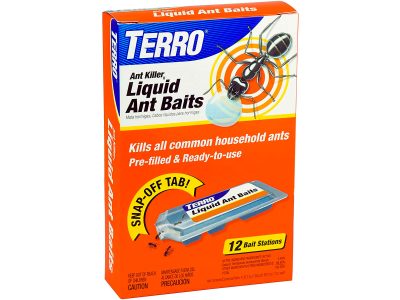
Editor’s Choice
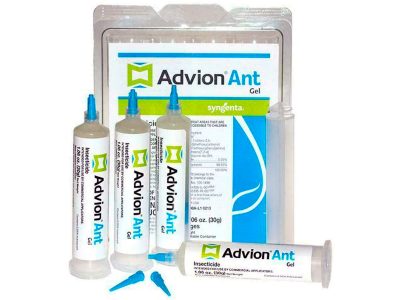
Professional Grade

Best Natural
- Why Ants Invade Cars: Understanding the Problem
- How to Get Rid of Ants in Car: Step-by-Step Ant Elimination Process
- Best Car Ant Control Products 2025
- Proven DIY Solutions for Car Ant Control
- Advanced Prevention Strategies
- When to Call Professional Pest Control
- Cost Analysis: DIY vs Professional Treatment
- Frequently Asked Questions
- Emergency Response: Dealing with Aggressive Ant Species
- Seasonal Ant Control Strategies
- Advanced Troubleshooting Guide
- Long-Term Vehicle Protection Plan
- Conclusion: Maintaining an Ant-Free Vehicle
Why Ants Invade Cars: Understanding the Problem
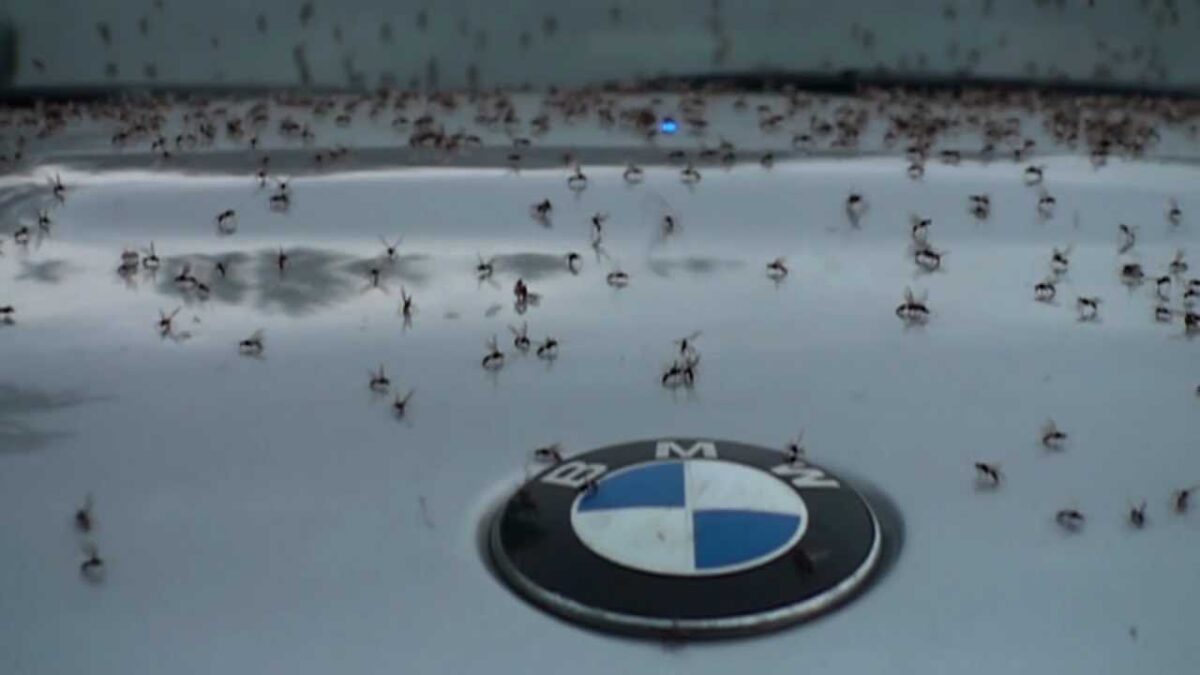
Ant infestations in vehicles occur more frequently than most car owners realize. A 2025 study by automotive pest control specialists found that over 40% of drivers experience ant problems annually, with peak activity occurring during warm months when colonies are most active.
Food Attraction
Even microscopic crumbs from snacks, spilled beverages, or food wrappers create powerful attractants that can draw entire ant colonies to your vehicle.
Ideal Environment
Cars provide warmth, moisture from condensation, and numerous hiding spots that make them attractive temporary nesting sites for foraging ants.
Strategic Location
Vehicles parked near ant colonies, vegetation, or on unsealed surfaces provide easy access routes for scouts searching for new food sources.
Common Ant Species Found in Vehicles
| Ant Species | Size | Preferred Environment | Risk Level |
|---|---|---|---|
| Pavement Ants | 1/8 inch | Driveways, sidewalk cracks, parking areas | Low – nuisance only |
| Sugar Ants | 1/16-1/4 inch | Sweet substances, beverage spills | Medium – rapid multiplication |
| Carpenter Ants | 1/4-1/2 inch | Moisture, decaying organic matter | High – potential wire damage |
| Fire Ants | 1/8-1/4 inch | Warm climates, oil/grease residue | Very High – aggressive stinging |
| Ghost Ants | 1/16 inch | Humid environments, sweet foods | Medium – difficult to detect |
How to Get Rid of Ants in Car: Step-by-Step Ant Elimination Process
Phase 1: Inspection and Assessment
- Identify the Species: Take clear photos of the ants for species identification. Note their size, color, and behavior patterns to select the most effective treatment approach.
- Locate Entry Points: Inspect door seals, window gaps, air vents, and trunk seals. Check for trails leading to and from the vehicle.
- Find the Source: Look for nearby ant hills, particularly within 50 feet of your parking area. Check pavement cracks, landscaping edges, and tree bases.
- Assess Infestation Level: Count visible ants and note concentration areas. Small groups suggest early infestation; trails indicate established colonies.
- Document Problem Areas: Map where ants congregate inside the vehicle – seats, floor mats, storage compartments, or under the hood.
Phase 2: Complete Vehicle Sanitation
Professional Cleaning Protocol
Automotive pest control experts recommend this systematic approach for maximum effectiveness:
- Remove All Contents: Empty the vehicle completely, including floor mats, seat covers, personal items, and any stored materials that could harbor ants or food residue.
- Targeted Vacuuming: Use a high-powered shop vacuum with crevice attachments to extract debris from seat gaps, console areas, door panels, and under-seat storage compartments.
- Deep Clean Surfaces: Wipe all hard surfaces with an automotive-safe degreasing cleaner, paying special attention to sticky residues that attract ants.
- Treat Floor Mats: Remove and wash floor mats separately with hot, soapy water. Allow complete drying before reinstallation to eliminate moisture that attracts ants.
- Address Pheromone Trails: Clean areas where ants were most active with a 50/50 white vinegar and water solution to neutralize scent trails that guide other ants to your vehicle.
Best Car Ant Control Products 2025
Professional-Grade Baiting Systems
TERRO Liquid Ant Baits
Editor's ChoiceHow Does It Work
How to Use
- Place bait stations outside the vehicle, near ant trails and entry points
- Snap off corner tabs to activate the liquid bait access
- Position 10-20 feet from your car to draw ants away from the vehicle
- Monitor stations daily and replace when empty or after 3 months
- Allow 1-2 weeks for complete colony elimination
- Eliminates entire colonies including queens and larvae
- Attracts most common household and automotive ant species
- Ready-to-use design requires no mixing or measuring
- Long-lasting formula remains effective for months
- Proven effective in university pest control studies
- Takes 1-2 weeks for complete results
- Must be placed away from vehicle, not inside
- May initially attract more ants before elimination begins
Advion Ant Gel Bait
Professional GradeHow Does It Work
How to Use
- Apply small dots (pea-sized) near ant trails and entry points
- Use in cracks, crevices, and areas where ants forage
- Apply to non-porous surfaces around the vehicle exterior
- Inspect placements daily and reapply as consumed
- Keep gel away from vehicle interior to avoid contamination
- Professional-grade formulation used by exterminators
- Targets all major ant species including carpenter and fire ants
- Rigid gel allows multiple ants to feed simultaneously
- Precise application minimizes waste and mess
- Highly effective against colonies resistant to other baits
- Requires precise application technique
- More expensive than consumer-grade alternatives
- Professional-grade toxicity requires careful handling
Natural and Safe Alternatives
Mighty Mint Natural Ant Repellent
Best NaturalHow Does It Work
How to Use
- Spray around vehicle exterior, focusing on entry points
- Apply to door seals, wheel wells, and parking area perimeter
- Reapply every 2-3 days or after rain for continuous protection
- Test on inconspicuous area first to check for staining
- Shake well before each use to ensure proper mixing
- Safe for children, pets, and environmental use
- Pleasant mint scent that humans enjoy
- No synthetic chemicals or toxic residues
- Biodegradable and eco-friendly formula
- Can be used inside vehicle without safety concerns
- Requires frequent reapplication for effectiveness
- May not eliminate established colonies
- Less effective against determined ant infestations
- Scent may be overwhelming in enclosed spaces
Emergency Contact Killers
| Product | Active Ingredient | Best For | Safety Rating |
|---|---|---|---|
| Zevo Ant & Roach Spray | Geraniol + Cinnamon Oil | Immediate knockdown, family-safe | High – Good Housekeeping Seal |
| Raid Essential Oils Spray | Lemongrass + Geraniol | Natural contact killer | High – pet and child safe |
| Ortho Home Defense | Bifenthrin + Zeta-cypermethrin | Long-term perimeter protection | Medium – professional application recommended |
Proven DIY Solutions for Car Ant Control
Heat Treatment Method
- Optimal Conditions: Choose a day when external temperatures exceed 80°F with direct sunlight. Clear skies and low humidity maximize effectiveness.
- Vehicle Preparation: Remove all temperature-sensitive items including electronics, plastic items, and personal belongings that could be damaged by high heat.
- Heat Amplification: Close all windows and sunroof, position vehicle in direct sunlight, and optionally use reflective sunshades to concentrate heat inside the cabin.
- Engine Heat Boost: Start the vehicle and run heater on maximum setting for 10-15 minutes to eliminate ants in the engine compartment and HVAC system.
- Duration Protocol: Maintain elevated temperatures (120°F+) for minimum 60 minutes to ensure complete ant elimination, including eggs and larvae.
Temperature Safety Guidelines
- Never enter an overheated vehicle – temperatures can exceed 170°F
- Monitor dashboard components for warping or damage
- Allow complete cooling before re-entering vehicle
- Check tire pressure after cooling as heat expansion may affect PSI
Professional Steam Cleaning
Equipment Requirements
Portable steam cleaners reaching 330°F+ with automotive-safe attachments for upholstery, carpet, and hard surface cleaning.
Safety Protocols
Wear protective equipment, ensure adequate ventilation, and follow manufacturer guidelines for automotive applications.
Target Areas
Focus on wheel wells, undercarriage accessible areas, HVAC vents, and interior crevices where ants hide.
Natural Repellent Formulations
| Natural Method | Ingredients | Application | Effectiveness Duration |
|---|---|---|---|
| Essential Oil Spray | Peppermint, eucalyptus, lemongrass oils | Spray entry points and ant trails | 3-5 days (weather dependent) |
| Soap & Salt Solution | Dawn dish soap, Epsom salt, water | Direct application to visible ants | Immediate contact kill |
| Coffee Ground Barrier | Used coffee grounds | Sprinkle around parking area | 1-2 weeks until decomposition |
| Cinnamon Deterrent | Ground cinnamon or cinnamon oil | Dust around vehicle or cotton ball placement | 5-7 days (reapply after rain) |
Advanced Prevention Strategies
Environmental Modification
- Strategic Parking: Choose paved surfaces over dirt or grass. Avoid parking near vegetation, compost areas, or known ant colonies. Concrete and asphalt create barriers that ants find difficult to navigate.
- Moisture Control: Fix any vehicle leaks immediately, as moisture attracts ants and other pests. Check air conditioning condensation drains and ensure proper drainage away from parking areas.
- Perimeter Treatment: Apply food-grade diatomaceous earth or ant granules around regular parking spots to create protective barriers that deter ant exploration.
- Landscape Management: Trim vegetation at least 3 feet from parking areas, eliminate standing water sources, and remove organic debris that provides ant nesting materials.
- Regular Monitoring: Conduct weekly inspections of your vehicle and parking area, checking for new ant activity, trails, or colonies that require immediate attention.
Vehicle Sealing and Protection
Professional Sealing Checklist
Automotive detailing experts recommend these specific areas for ant-proofing:
- Door and Window Seals: Inspect rubber weatherstripping for gaps or damage. Replace worn seals and apply silicone lubricant to maintain flexibility.
- HVAC System: Install fine mesh screens over exterior air intake vents to prevent ant entry while maintaining airflow efficiency.
- Trunk and Hood Seals: Check for compression and continuity of rubber seals. Apply automotive-grade weather stripping where gaps exist.
- Cable and Wire Entry Points: Seal gaps around wiring harnesses and cables with expanding foam or automotive putty designed for electrical applications.
- Undercarriage Access: Inspect and seal openings in wheel wells, brake line access points, and suspension component areas where practical without affecting function.
Maintenance Protocol
| Maintenance Task | Frequency | Focus Areas | Time Required |
|---|---|---|---|
| Interior Cleaning | Weekly | Vacuum crumbs, wipe surfaces, check storage | 15-20 minutes |
| Exterior Wash | Bi-weekly | Remove pheromone trails, clean wheel wells | 30-45 minutes |
| Deep Sanitation | Monthly | Steam clean, disinfect, treat entry points | 2-3 hours |
| Perimeter Inspection | Monthly | Check for ant colonies, treat parking area | 30 minutes |
When to Call Professional Pest Control
Professional Intervention Indicators
- Large Colony Presence: More than 50 visible ants or multiple trails suggest established colonies requiring professional-grade treatment protocols.
- Recurring Infestations: Ants returning within 2-4 weeks despite thorough treatment indicate missed colonies or environmental factors requiring expert assessment.
- Electrical Concerns: Any evidence of ants near wiring, batteries, or electronic components warrants immediate professional evaluation to prevent damage or safety hazards.
- Multiple Vehicle Impact: Infestations affecting multiple vehicles in the same location suggest environmental issues requiring comprehensive property treatment.
- Species Identification: Unknown ant species or aggressive varieties like fire ants require professional identification and species-specific treatment approaches.
Professional Service Benefits
Expert Diagnosis
Professional pest control technicians can accurately identify ant species and locate hidden colonies that DIY methods might miss.
Advanced Treatments
Access to professional-grade products and application techniques not available to consumers, ensuring more effective elimination.
Ongoing Protection
Comprehensive treatment plans including follow-up services and preventive maintenance to ensure long-term ant-free vehicles.
Cost Analysis: DIY vs Professional Treatment
| Treatment Method | Initial Cost | Time Investment | Success Rate | Follow-up Required |
|---|---|---|---|---|
| DIY Basic (Cleaning + Sprays) | $25-50 | 4-6 hours | 60-70% | Weekly monitoring |
| DIY Advanced (Baits + Heat) | $75-125 | 8-12 hours | 80-85% | Monthly maintenance |
| Professional Service | $150-300 | 2-3 hours | 95-98% | Quarterly check-ups |
| Professional + Prevention | $300-500 | 4-5 hours | 98-99% | Annual maintenance |
Frequently Asked Questions
How long does it take to completely eliminate ants from a car?
Complete ant elimination typically takes 1-3 weeks depending on the infestation size and methods used. Bait systems require 7-14 days for colony elimination, while contact killers provide immediate results but may miss hidden ants.
Heat treatment and professional services often achieve faster results within 24-48 hours, though follow-up monitoring is essential to ensure no survivors remain.
Can ants damage my car’s electrical system?
Yes, certain ant species, particularly carpenter ants, can chew through wire insulation and cause electrical problems. They’re attracted to the warmth of electrical components and may build nests near wiring harnesses.
Signs of electrical damage include flickering lights, non-functioning components, or visible ant activity near the battery, fuse box, or engine wiring. Address these situations immediately to prevent costly repairs.
Is it safe to use ant spray inside my car?
Most commercial ant sprays are not recommended for enclosed vehicle spaces due to chemical concentration and potential health risks. The confined environment can trap toxic vapors and create breathing hazards.
If you must use spray inside your vehicle, choose natural, plant-based formulations and ensure maximum ventilation. Always test products on inconspicuous areas first to prevent upholstery damage.
What’s the best way to prevent ants from coming back?
Prevention success depends on three key factors: maintaining vehicle cleanliness, eliminating nearby ant colonies, and creating physical barriers. Regular vacuuming, immediate spill cleanup, and strategic parking are essential.
Apply perimeter treatments around your regular parking spots and inspect your vehicle weekly for early signs of ant activity. Consistency in prevention efforts typically reduces reinfestation risk by 80-90%.
Do natural ant repellents work as well as chemical products?
Natural repellents like essential oils and coffee grounds can effectively deter ants but typically require more frequent application and may not eliminate established colonies. They work best as preventive measures rather than curative treatments.
For active infestations, natural methods achieve 60-70% effectiveness compared to 85-95% for chemical baits. However, natural products offer safety advantages around children, pets, and in enclosed vehicle spaces.
Should I place ant baits inside my car?
No, ant baits should never be placed inside your vehicle. Most baits contain toxic ingredients that can create health hazards in enclosed spaces and may contaminate surfaces you regularly touch.
Instead, place bait stations outside your car, 10-20 feet away near ant trails and entry points. This draws ants away from your vehicle while safely eliminating the colony at its source.
Emergency Response: Dealing with Aggressive Ant Species
Species-Specific Response Protocols
| Ant Species | Identification | Immediate Action | Treatment Priority |
|---|---|---|---|
| Fire Ants | Red/black, aggressive when disturbed, painful stings | Evacuate vehicle, call professionals | Emergency – same day service |
| Carpenter Ants | Large (1/4-1/2 inch), black, near moisture | Check for electrical damage, professional assessment | High – within 48 hours |
| Pharaoh Ants | Small, yellow/brown, multiple trails | Avoid sprays, use baits only | Medium – within 1 week |
| Pavement Ants | Small, dark brown, near concrete | Standard cleaning and baiting | Low – DIY acceptable |
Seasonal Ant Control Strategies
Spring Prevention (March-May)
- Early Detection: Inspect vehicles weekly as ant colonies become active and queens begin establishing new nests
- Preventive Treatments: Apply perimeter barriers before peak season to intercept scout ants before they establish trails
- Vehicle Preparation: Deep clean vehicles after winter storage to remove any attractants that accumulated during dormant months
Summer Management (June-August)
- Peak Activity Response: Increase monitoring frequency to twice weekly as colonies reach maximum size and foraging intensity
- Heat Treatment Optimization: Utilize hot weather for natural heat elimination methods when external temperatures exceed 85°F
- Hydration Prevention: Address condensation and moisture issues that become more problematic in humid summer conditions
Fall Preparation (September-November)
- Colony Targeting: Focus on elimination rather than deterrence as ants seek winter shelter and may establish permanent nests
- Food Source Control: Increase vigilance around harvest season foods, Halloween candy, and increased snacking during travel
- Pre-Winter Sealing: Complete weatherproofing and sealing projects before cold weather makes ants more determined to find shelter
Advanced Troubleshooting Guide
Common Treatment Failures and Solutions
| Problem | Likely Cause | Solution | Prevention |
|---|---|---|---|
| Ants ignore bait stations | Wrong bait type for species | Switch between protein and sugar-based baits | Identify ant species before treatment |
| Ants return after treatment | Colony not fully eliminated | Extend treatment duration, add bait stations | Use multiple bait types simultaneously |
| More ants appear initially | Normal bait response | Continue treatment, don’t use sprays | Expect 2-3 day increase before decline |
| Ants avoid treated areas | Repellent contamination | Clean area, restart with fresh bait | Never mix baits with sprays |
Long-Term Vehicle Protection Plan
Monthly Tasks
Deep clean interior, inspect entry points, refresh natural repellents, check parking area for new ant activity
Quarterly Tasks
Professional inspection, seal maintenance, perimeter treatment renewal, update prevention strategies
Annual Tasks
Complete vehicle weatherproofing review, professional pest control assessment, update emergency protocols
Conclusion: Maintaining an Ant-Free Vehicle
Successfully eliminating ants from your car requires a comprehensive approach combining immediate treatment, thorough cleaning, and consistent prevention. The most effective strategy starts with proper species identification, followed by targeted elimination using either professional-grade baits or proven DIY methods.
Prevention remains your strongest defense against future infestations. Weekly interior cleaning, strategic parking choices, and prompt attention to spills or attractants significantly reduce the likelihood of ant problems. When combined with seasonal perimeter treatments and proper vehicle sealing, these practices create an effective barrier against automotive ant invasions.
Remember that persistence and consistency are key to long-term success. While DIY methods can handle most situations effectively, don’t hesitate to consult professional pest control services for aggressive species, electrical concerns, or recurring infestations that resist standard treatment approaches.
Final Success Tips
- Act quickly when you first notice ants – early intervention prevents colony establishment
- Be patient with bait treatments – complete elimination takes time but provides lasting results
- Stay consistent with cleaning and prevention routines to maintain ant-free status
- Monitor regularly for signs of new activity, especially during peak ant seasons
